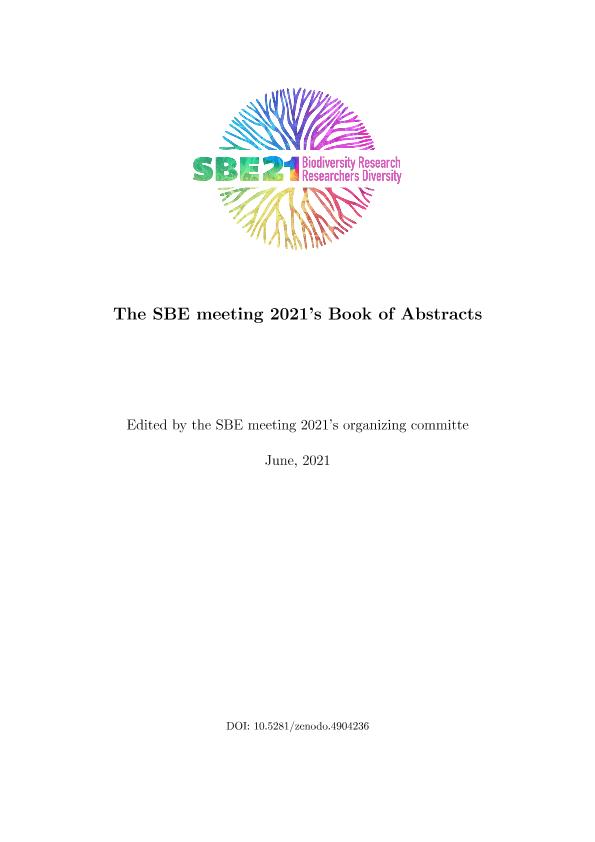Evento
Native and foreign proteins conform the OXPHOS complexes of Lophophytum mirabile (Balanophoraceae)
Tipo del evento:
Reunión
Nombre del evento:
II Virtual Meeting of Systematics, Biogeography, and Evolution
Fecha del evento:
19/06/2021
Institución Organizadora:
SBE meeting 2021's organizing committe;
Título del Libro:
The SBE meeting 2021's Book of Abstracts
Editorial:
SBE Meeting 2021's Organizing Committee
Idioma:
Inglés
Clasificación temática:
Resumen
The intimate contact between the holoparasitic plant Lophophytum mirabile (Bal- anophoraceae) and its host plant (Mimosoideae, Fabaceae) facilitates the exchange of genetic information, increasing the frequency of horizontal gene transfer (HGT). Lophophytum has revealed the unprecedented acquisition of a large number of mi- tochondrial genes from its legume host that replaced the native homologs. These foreign genes are functional and encode proteins that form multi-subunit enzyme complexes together with proteins of nuclear origin. For all these reasons, Lophophy- tum is an interesting model to study the evolution of multiprotein complexes in the mitochondria, the impact of HGT in the nuclear genome, and its co-evolution with the mitochondrial genome. Given the presence of foreign mitochondrial proteins in June 22 5:00 PM Session 8Lophophytum, it is proposed that nuclear genes that encode proteins involved in these complexes are also foreign, minimizing the incompatibilities in the assembly and functioning of these multiprotein complexes. Multiple alignments were generated from nucleotide sequences of 25 angiosperms to infer the phylogenetic relationships of 75 nuclear genes (obtained from the Lophophytum transcriptome) involved the ox- idative phosphorylation system (OXPHOS) of Lophophytum. Maximum likelihood phylogenetic analyses were ran with RAxML 8.2.11 using GTRGAMMA models along with 1,000 rapid bootstrapping pseudo-replicates. To examine gene conver- sion events within genes we used Geneconv. Based on these results, we infer that 74 subunits are native and one is foreign (SDH3) as a result of HGT from mimosoid hosts. These results reflect that the OXPHOS of Lophophytum is exceptional due to the presence of foreign (mostly encoded in the mitochondrial genome) and native (mostly encoded in the nuclear genome) subunits, generating new questions about the evolution and physiology of this parasitic plant. It is possible that the interac- tions between native and foreign proteins do not generate incompatibilities in the assembly and functioning of OXPHOS due to the low rate of evolution of mitochon- drial genes in angiosperms. In contrast, the higher divergence among angiosperm nuclear genes would cause a negative effect on OXPHOS activity if foreign genes replace the native homologs.
Archivos asociados
Licencia
Identificadores
Colecciones
Eventos(IBAM)
Eventos de INST.DE BIOLOGIA AGRICOLA DE MENDOZA
Eventos de INST.DE BIOLOGIA AGRICOLA DE MENDOZA
Citación
Native and foreign proteins conform the OXPHOS complexes of Lophophytum mirabile (Balanophoraceae); II Virtual Meeting of Systematics, Biogeography, and Evolution; Argentina; 2021; 1-4
Compartir




